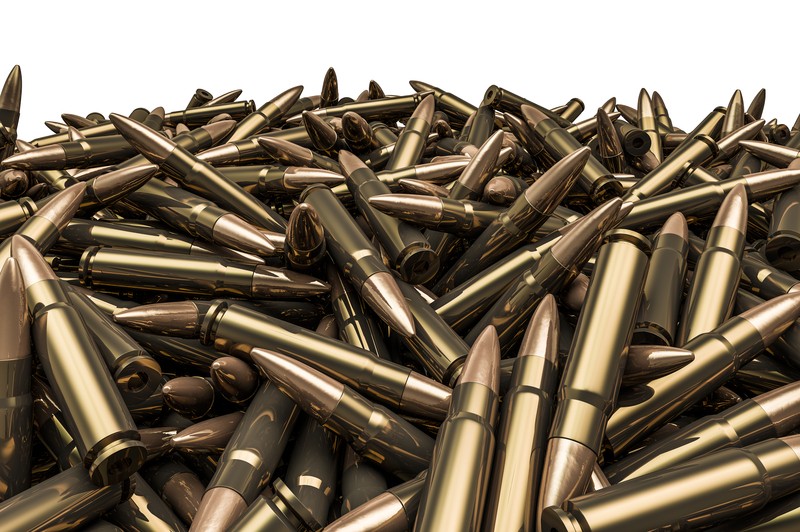Not all bullets are created equal. Some have thinner jackets than others. Some have unsealed primers that can get wet or damp and make them less prone to proper function. Some bullets are simply low quality all-around. To avoid buying these lemons, learn the top tips below.
Manufacturing Standards of the Top Makers
If you stick with a well named, well established company with a long running history of producing top quality ammo, then you are not going to have any issues with it. Sure, there are recalls occasionally on practically any product made, but it is pretty rare with good quality ammunition.
Top Brands, Top Quality, Top Prices
As a kid, I grew up hunting with old ammunition brands from companies like Western, Olin, Remington Green, Peters, Western, Winchester, Super-X, Monark, and others. I sure wish I had all those old ammo boxes back in a collection. Even in the 50’s that ammo worked, and fired every time. I don’t ever recall a misfire, except when we allowed some of the old paper hull shotshells to get wet and swollen. Most of them fired, too. I never had a brass loaded cartridge fail. Today, if you buy Remington, Winchester, Federal, or Hornady ammo, the Big Four makers of modern ammunition, you are going to get well made, precision crafted, high quality ammunition for everyday use. Ammo from these makers will be extremely reliable and highly suitable for survival prep use and SHTF scenarios.
Second Shelf Ammunition
There are several other lesser noted brands of ammunition that will perform just as well as the top maker products. From my survivalist experience these include such brands as PMC, UMC (Made by Remington), American Eagle, Speer, CCI, Blazer, PNW Arms, Cor-Bon, MagTech, and DRT. Some of these brands may be hard to find on retail dealers’ shelves or perhaps in limited quantities.
Really Cheap is Really Cheap
Well within the last decade or so the ammunition market has become flooded with all kinds of virtually unknown or untested ammo. Some of it may be perfectly fine, but I tend to stay away from it. Much of it is made in foreign countries especially Russia under suspect quality standards despite what the catalog or internet descriptions might say. Though this ammo may come from old established factories, this neither guarantees quality, reliability nor accuracy.
Steel cased ammo is not good for most firearm chambers especially rifles such as the AR-15. Those chambers are meant for brass not steel. Brass cases seal to the chamber and release upon firing and extraction. Steel cases do not always do this and have been known for failures to extract leaving the headless case stuck in the chamber.
Inspection Points
When buying SHTF ammo here are some guidelines to follow. Check the packaging for well made, sturdy, good printed, heavy stock paper board. This implies the maker cares enough to package their products well. I favor ammo that comes out of the packaging box with each cartridge inserted in a divided card honeycomb or a plastic one. This protects the ammo during shipping and storage. The brass should look new, fresh and bright. Discolored, scarred, scratched, or dented brass may mean suspect quality. The primers should be sealed.
Buy In Bulk
Try to buy in quantity. If you are buying common cartridges that you shoot a lot or want to keep in storage for a bad, rainy SHTF type day like the .223/5.56, 9mm, or .45 ACP, then shop around for 1000 round case prices. As a rule of thumb for desirable ammo, shop for these prices. For .223/5.56 use the benchmark of 33.5 cents per round. Any good brand of ammo case priced at $350 or less for 1000 rounds is a fair price these days. Try to buy 9mm for 26 cents a round or around $65 for 250 rounds. The .45 ACP should be bought for about 40 cents a round. If you are buying special hunting ammunition or some of the new self-defense ammo, then expect to pay much more. Again the trick is to shop around.
No matter how you slice it, bullets aren't cheap. It may be tempting to buy the cheaper versions to save some substantial money, but in the interest of the safety of your family, don't rely solely on those brands. Many of them are fine for target shooting, but stocking up on the good brands is equally important. T
he final tip will help here: buy in bulk. Just like with everything else, buying bullets in bulk is miles cheaper, and shopping around can get you even lower prices than usual.
This is excellent advice for the gun-loving prepper in all of us. To read more on this topic, head over to SHTF Blog.
